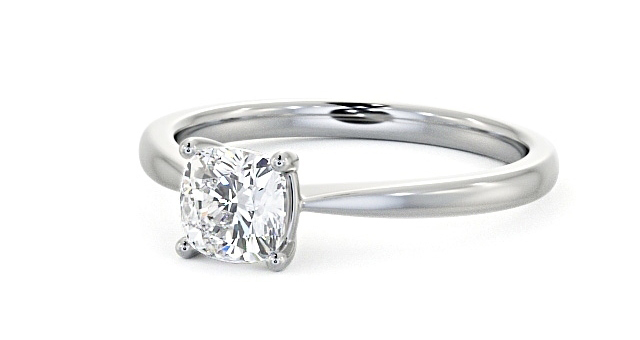DIAMOND SHAPE
The most distinctive and easily identifiable characteristic of a diamond is the shape.
Everyone has their own preferred diamond shape so the choice you make comes entirely down to personal preference.
The shape of a diamond will often be referred to as cut. You will likely have heard people using Round Cut or Princess Cut to describe a diamond but the Cut grade is actually separate from the shape and the two should not be confused.
The Cut of a diamond is how well it has been fashioned from the original rough stone. We have more information on Diamond Cut here.
The shape refers to the outline of the diamond. Some diamond shapes you will likely be familiar with are Round, Princess, Marquise and Oval. We also offer other fancy shape diamonds which you can see below
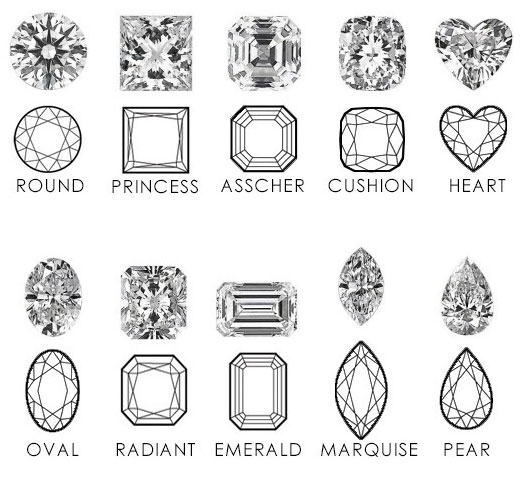
When choosing the diamond shape for your jewellery it is important to choose something you like and something you feel suits you. After all, it will be yours to wear and admire daily.
The Round diamond is the most popular diamond shape by far. You can see the general popularity of each diamond shape below

Length to Width Ratio
The ratio of a diamond indicates how long and wide the diamond is when viewed from above. This is only relevant to fancy shape diamonds (all diamonds except for Round).
Every fancy shape diamond has a certain length to width ratio which is considered to be preferred for that diamond shape.
You can find the lowest and highest ratios we operate within for each fancy shape diamond in the descriptions below.
The length to width ratio of a diamond is calculated by dividing the length of the diamond by the width. For example, a Princess shaped diamond which is 4.40mm in length and 4.30mm in width would have a ratio of 1.02. A diamond with this ratio would appear perfectly square which is the case with most Princess, Cushion and Asscher shaped diamonds.
There are always new diamond shapes being explored and invented all of the time but there are 10 classic shapes that have already stood the test of time. We talk about those 10 shapes in detail below...
Round
With around 60% of all diamonds sold being Round it is the most popular diamond shape by far.
The Round diamond shape has been researched the most in comparison to any other diamond shape. The Round diamond is unrivalled in terms of light reflection and sparkle.
Round diamonds are a classic choice and look great in jewellery of any kind. This makes them a great option if you’re unsure of what your partner or jewellery recipient may like.
Almost all Round diamonds are brilliant cut. This means they have 58 facets (Faces or sides).
You can view our full range of Round diamond engagement rings here.
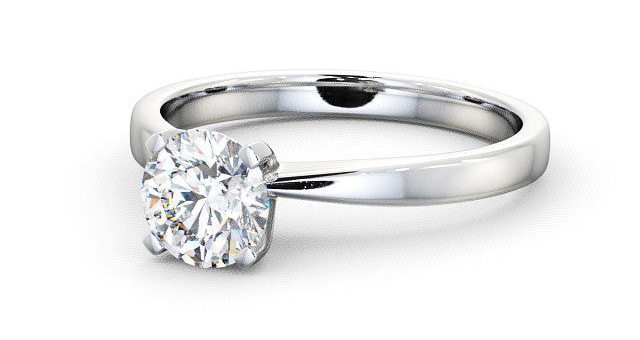
Princess
The Princess shaped diamond is the second most popular diamond shape after the Round.
The Princess shaped diamond is a traditional and elegant design which gives a great amount of sparkle. It’s the perfect balance between modern and romantic as well as being very popular for engagement rings.
The filled out, square shape of a Princess shape diamond can make those diamonds appear larger in comparison to a Round diamond with the same Carat weight and has almost the same amount of brilliance, dispersion and therefore sparkle.
The most sought-after princess shaped diamonds appear perfectly square. The Princess shaped diamond which we source have a length to width ratio of between 1:1 to 1:1.05.
You can find all of our Princess engagement rings here.

Emerald
An Emerald diamond is known for being rectangular in shape with cropped corners and step facets.
Step cut diamonds, like the Emerald, have elongated facets which are placed in rows, as opposed to the triangular and kite shaped facets of Brilliant cut diamonds like the Round.
While the step facets of an Emerald diamond mean it isn’t as fiery as a Brilliant cut diamond the elongated step facets give off strong, dramatic flashes of light.
The large open table of the Emerald diamond highlights the Clarity of the diamond. This means any imperfections within the diamond are more visible; therefore it is important to consider a higher clarity grade when opting for an Emerald diamond.
To guarantee an eye-clean Emerald diamond we would recommend a minimum of VS1. For larger Carat weights you may require a clarity grade above VS1 to ensure the diamond will be eye-clean.
The lowest ratio we source for Emerald diamonds is 1:1.25 and the highest being 1:1.45.
You can find our Emerald diamond engagement rings here.

Asscher
An Asscher shaped diamond is fashioned in the same way as the Emerald diamond with step facets. The only difference being that the Asscher is square in shape and is often referred to as a ‘squared emerald’.
The Asscher was first created in 1902 and named after its creator, Joseph Asscher. This diamond shape gives of a lovely vintage feel.
The lowest ratio value we source from an Asscher diamond is 1:1 and the highest 1:1.05.
You can find our Asscher diamond engagement rings here.
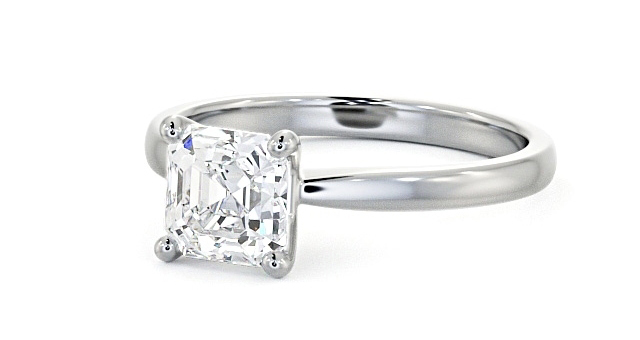
Marquise
The Marquise is a long diamond which has curved sides and pointed ends.
When set into a ring the Marquise diamond can make the finger appear long and slender, like the shape of the diamond. This diamond is perfect in any ring style, whether that be a solitaire, halo or three stone ring.
With 58 facets this beautiful diamond shape has an excellent sparkle.
We operate between 1:1.70 and 1:2.20 ratio values for all of our Marquise shape diamonds.
You can view our Marquise engagement rings here.
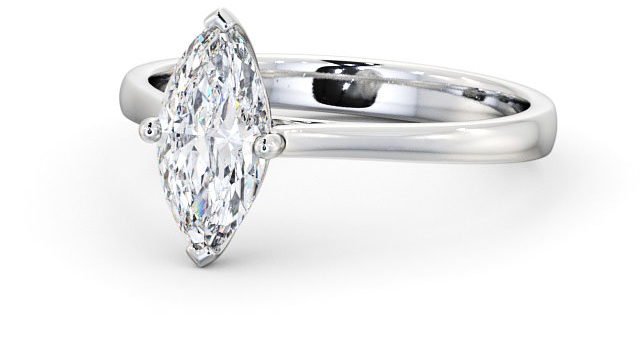
Oval
The Oval shape diamond has many similarities to the Round. The main similarity being that, like the Round, it also has 58 facets which gives this diamond a similar sparkle and fire to the Round.
This diamond is perfect for anyone who likes the Round diamond but prefers something a little more unusual.
The Oval has an elongated shape, in comparison to the Round, which can make the diamond appear larger than a Round with the same Carat weight.
The Oval diamonds which we source have a ratio of between 1:1.30 and 1:1.50.
You can view our Oval engagement rings here.
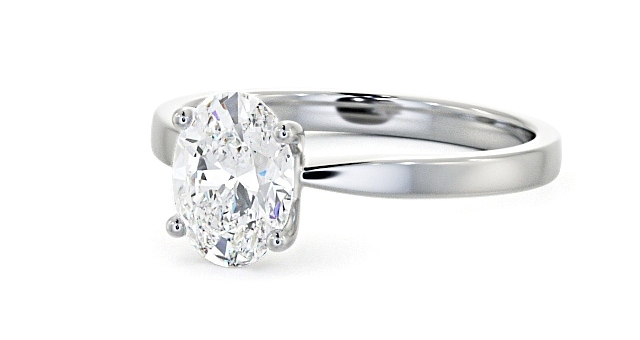
Pear
The Pear diamond, also referred to as the teardrop diamond, is pointed at one end and rounded at the other. This unusual shape makes the diamond popular with those looking for something a little different.
The Pear shape diamond also has 58 facets, again like the Round, which means this stunning shape has an equally beautiful sparkle.
The Pear diamonds which we source have a ratio of 1:1.35 at the lowest and 1:1.65 at the highest.
You can find all of our Pear engagement rings here.
The Bow-Tie Effect
When light passes through certain diamonds, like the Marquise, Oval and Pear shapes, it will cast a horizontal shadow across the central facets. This is referred to as a bow tie effect, simply because it looks like a bow tie.
The bow tie effect is completely normal and while we will always try to minimise this as much as possible by sourcing a diamond with good proportions, you will always see some form of dark line with those shapes.
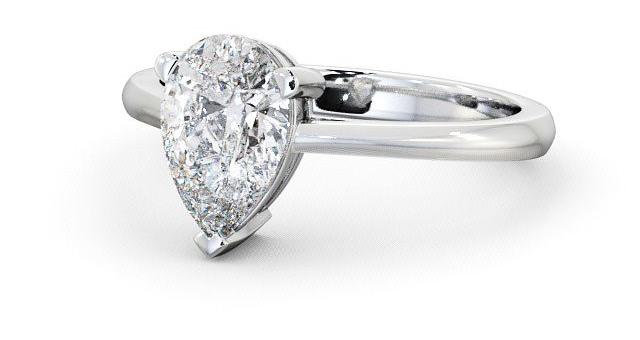
Radiant
With cropped corners and 70 facets this diamond truly lives up to its name providing a beautiful sparkle.
This diamond shape is stunning in all jewellery pieces, especially engagement rings.
We source Radiant diamonds with the ratio value of 1:1.15 as the lowest and 1:1.35 as the highest.
You can find our Radiant diamond engagement rings here.
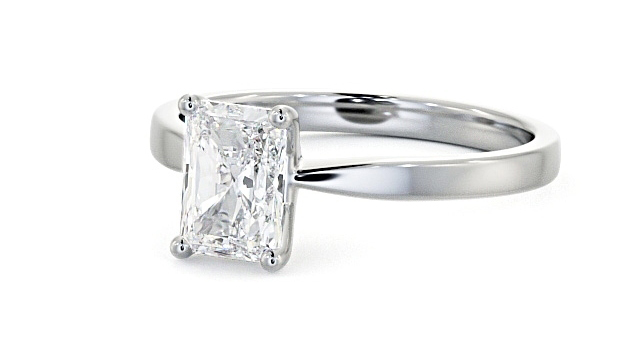
Heart
The heart shaped diamond is perfect for showing love and affection for any occasion but especially proposals.
We recommend opting for a Carat weight of 0.50ct as a minimum with this diamond shape as smaller stones can often make it difficult to see the heart outline. Another option would be a halo or bezel style ring as they can bring out the shape.
The lowest ratio value we source for Heart shape diamonds is 1:0.85 and the highest at 1:1.05.
You can view our Heart diamond engagement rings here.

Cushion
The Cushion shaped diamond is often referred to as the pillow cut diamond.
This diamond is a combination of the square shape with rounded corners and gives off a vintage feel.
The Cushion shape has 58 facets all allowing for a great amount of light reflection making these diamonds truly scintillating.
Any Cushion shape diamond we source would have ratio value of 1:1 at the lowest and 1:1.05 at the highest.
You can find our Cushion diamond engagement rings here.
